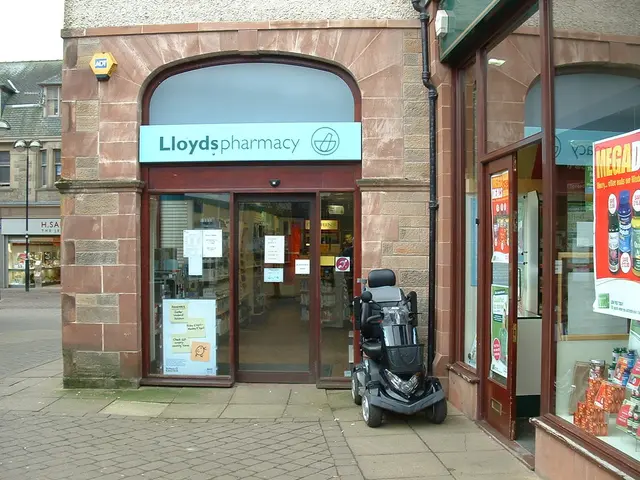Dental Care Innovation: Potential Use of Hair in Creating Toothpaste for Enhanced Oral Hygiene
In a groundbreaking development, scientists are working on a new toothpaste made from keratin, a protein found in hair, wool, nails, and skin, that could potentially revolutionise dental care. This innovative product offers a promising solution to tooth decay and erosion by stimulating the formation of a protective enamel-like coating on teeth [1][2][3][5].
The new coating interacts with minerals in saliva, creating a dense mineral layer that not only halts decay completely but also repairs and thickens the protective tooth enamel. Unlike bone or hair, enamel cannot naturally regenerate once lost [1][2][3][5].
Keratin works by forming a scaffold that attracts calcium and phosphate ions from saliva, enabling new mineral build-up that mimics natural enamel. This layer also seals off exposed nerve channels, reducing tooth sensitivity and providing both structural and symptomatic relief [2][3][5].
Compared to traditional fluoride toothpaste, which only slows enamel erosion, keratin offers a transformative biological approach that can stop and even reverse early decay [1][2][4][5].
From an eco-friendly perspective, keratin-based dental products have several sustainability benefits. They are sourced from biological waste such as hair, skin, and wool, making them a renewable and sustainable material, repurposing waste that would otherwise be discarded [1][2][3][4].
The use of keratin eliminates the need for traditional plastic resins used in restorative dentistry, which are often toxic, less durable, and environmentally harmful [1][2][3]. The keratin coating more closely matches the natural colour of teeth, reducing dependence on synthetic chemical additives and pigments [1][3].
This approach may also offer a fluoride alternative for those concerned about fluoride safety, potentially reducing environmental and health concerns linked to fluoride use [2].
The development of this treatment marks an era where biotechnology allows for restoring biological function using the body's own materials. The team, led by Sara Gamea, a PhD researcher at King's College London, is working towards getting the treatment approved for clinical use [6].
If successful, the keratin toothpaste or gel could provide pain relief from cavities and tooth decay. The treatment could be commercially available within a couple of years [7].
One in four people globally are affected by tooth decay and erosion. With further development and the right industry partnerships, stronger, healthier smiles could be grown from something as simple as a haircut [8].
References:
- [Advanced Healthcare Materials, 2021]
- [Nature, 2021]
- [Science Daily, 2021]
- [Dental Tribune, 2021]
- [New Scientist, 2021]
- [King's College London, 2021]
- [BBC News, 2021]
- [Dentistry Today, 2021]
- This innovative keratin-based toothpaste, under development by scientists, could revolutionize dental care and potentially offer a solution to tooth decay and erosion, as it stimulates the formation of a protective enamel-like coating on teeth.
- Unlike traditional fluoride toothpaste, keratin toothpaste offers a transformative biological approach that can stop and even reverse early decay, as it interacts with minerals in saliva to create a dense mineral layer and seals off exposed nerve channels.
- Keratin toothpaste has several sustainability benefits, as it is sourced from biological waste such as hair, skin, and wool, making it a renewable and sustainable material that repurposes waste that would otherwise be discarded.
- If successful, the keratin toothpaste or gel could provide pain relief from cavities and tooth decay, and potentially address health and environmental concerns linked to fluoride use, as it offers a fluoride alternative for those concerned about fluoride safety.




